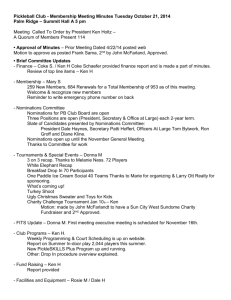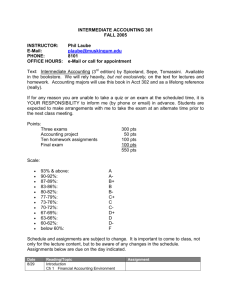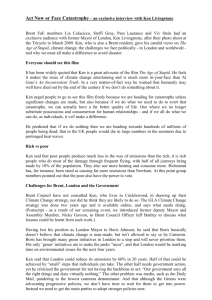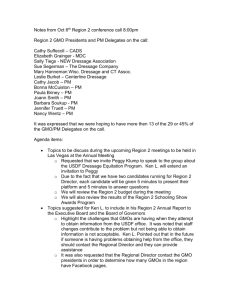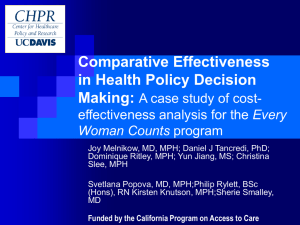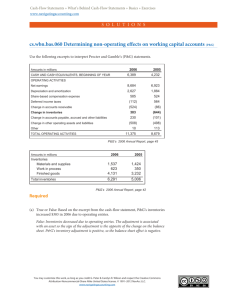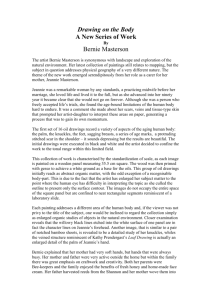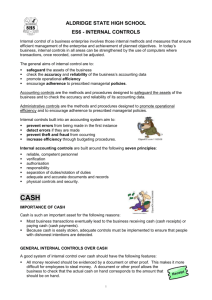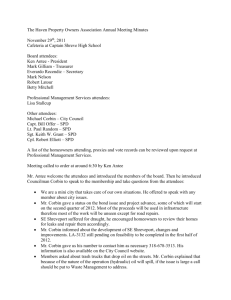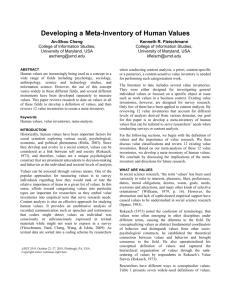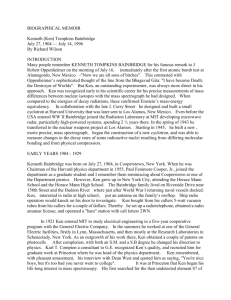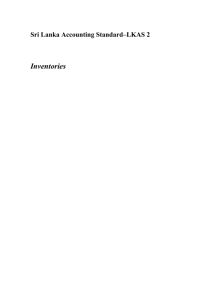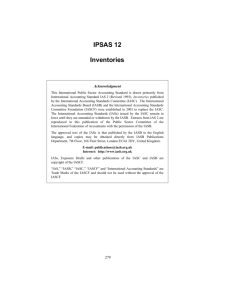Document 5863127
advertisement
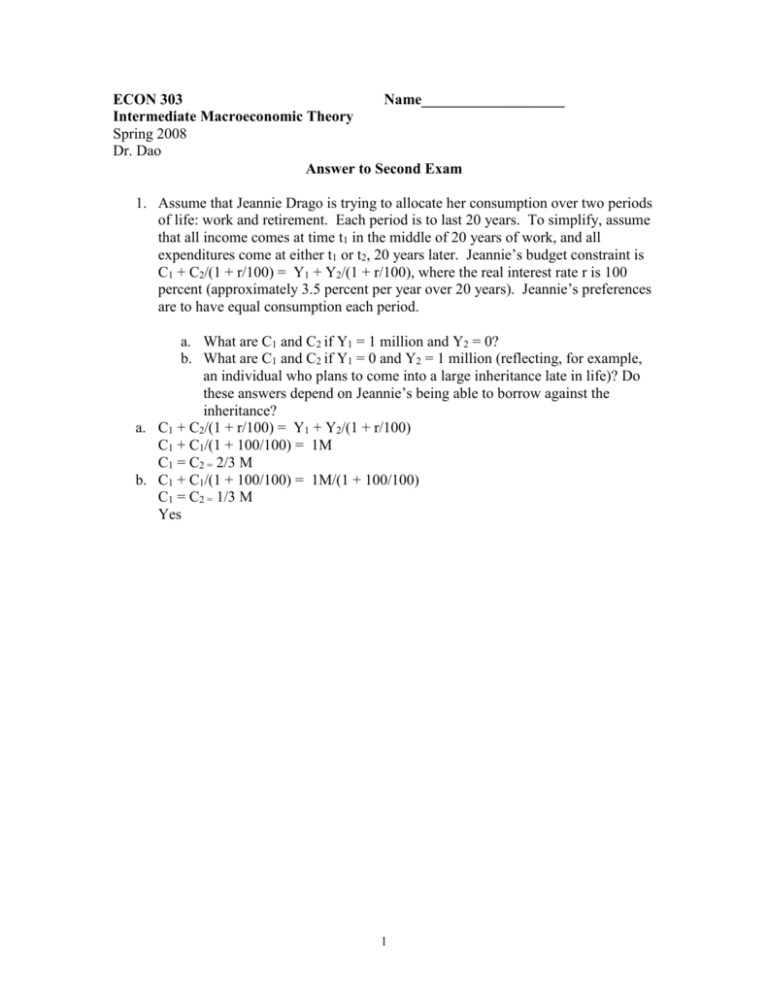
ECON 303 Name___________________ Intermediate Macroeconomic Theory Spring 2008 Dr. Dao Answer to Second Exam 1. Assume that Jeannie Drago is trying to allocate her consumption over two periods of life: work and retirement. Each period is to last 20 years. To simplify, assume that all income comes at time t1 in the middle of 20 years of work, and all expenditures come at either t1 or t2, 20 years later. Jeannie’s budget constraint is C1 + C2/(1 + r/100) = Y1 + Y2/(1 + r/100), where the real interest rate r is 100 percent (approximately 3.5 percent per year over 20 years). Jeannie’s preferences are to have equal consumption each period. a. What are C1 and C2 if Y1 = 1 million and Y2 = 0? b. What are C1 and C2 if Y1 = 0 and Y2 = 1 million (reflecting, for example, an individual who plans to come into a large inheritance late in life)? Do these answers depend on Jeannie’s being able to borrow against the inheritance? a. C1 + C2/(1 + r/100) = Y1 + Y2/(1 + r/100) C1 + C1/(1 + 100/100) = 1M C1 = C2 = 2/3 M b. C1 + C1/(1 + 100/100) = 1M/(1 + 100/100) C1 = C2 = 1/3 M Yes 1 2. Assume that a car-rental company buys cars for $20,000 each and rents them out to other businesses. The company faces a nominal interest rate of 10 percent per year, and car prices are rising at 6 percent per year. If cars depreciate at 30 percent per year, what will be the company’s cost of capital per car? Cost of capital = 20,000(.10+.30-.06) = $6,800 3. Assume that the following model of the economy applies: C = a + b(Y – T) Ifixed = c + dY Iinventories = g + hY Y = C + Ifixed + Iinventories + G Write an expression for equilibrium Y in this model. If b = 0.5, d = 0.2, and h = 0.2, what are the multipliers for G and T? Y = a + b(Y – T) + c + dY + g + hY + G Y(1-b-d-h) = a – bT + c + g + G Y = (a – bT + c + g + G)/(1-b-d-h) dY/dG = 1/(1 – 0.5 – 0.2 – 0.2) = 1/0.1 = 10 dY/dT = -0.5/(1 – 0.5 – 0.2 – 0.2) = -0.5/0.1 = -5 2 4. Ken Downing behaves according to Irving Fisher’s two-period model. Consumption in both periods is a normal good for Ken. Ken is initially a saver. Ken loses his job in period one. His first-period income becomes his unemployment benefits, which are much lower than his period-one income had been. His expected income in period two is unchanged. Illustrate graphically how this job loss affects Ken’s consumption in periods one and two. Draw initial budget line before Ken loses his job in period one. Show optimal consumption in periods one and two. Shift the budget line to the left to reflect his lower first-period income. Since income goes down and since consumption in both periods is a normal good, Ken’s consumption in periods one and two decreases. 5. Suppose that Andrew Marcus is 25 years old and expects to live to age 75. a. If he wins $20 million in cash (after taxes) in the lottery and retires, how much will he consume each year if he wants to have constant consumption and use up all his wealth by the time he dies? Assume the real interest rate is zero. b. If his total income in the year he wins the lottery is his lottery winnings, what will his average propensity to consume (APC) be for that year? c. What is Andrew’s “permanent income” in the year he wins the lottery? What is his “transitory income”? a. C = $20 million/50 = $400,000 b. APC = $400,000/$20 million = 0.02 c. Permanent income = $400,000 Transitory income = $20 million - $400,000 = $19.6 million 3 6. . Assume that the production function for an economy is given by Y = AKaHbL1-a-b, where H is the stock of inventories. Then the marginal product of inventories (MPH) is given by MPH = bAKaHb-1L1-a-b. If the stock of inventories does not depreciate, the price of inventories is the same as the price of output, and taxes are ignored, then the real “cost of capital” is just the interest rate r. a. Derive an expression for the “desired equilibrium stock of inventories” (H*) as a function of r and output Y by equating the cost of capital to MPH. (Hint: First substitute the production function into the expression for MPH to get MPH = bY/H). If r = 0.1, b = 0.05, and Y = 5,000, what is the desired stock of inventories? b. If r rose to 0.12, how would the desired stock of inventories change? See solution to problem 1 of problem set 5. 7. Mary Tsai is paid $3,000 every 30 days. Her salary is deposited directly in her bank. She spends all her money at a constant rate over the 30 days and must pay cash. She can (1) withdraw all of the money at once; (2) withdraw half at once and the rest after 15 days; (3) withdraw one-third at once, one-third after 10 days, and one-third at 20 days; or (4) make any number of evenly spaced withdrawals. Each withdrawal costs her $2 in terms of time and convenience. For each day that Mary has a dollar in the bank, she gets .03 cents (.0003 per dollar) in interest. Thus, if she withdraws half of her money immediately and half in 15 days, she has $1,500 in the bank for 15 days and earns $6.75 interest. a. Create a table showing transaction costs, interest earned, and total net earnings (+) or cost (-) associated with one, two, three, or four withdrawals per month. b. How many withdrawals per month lead to the largest net earnings? If Mary chooses this number, what will be her average amount of cash on hand over the 30 days? a. Withdrawal 1 2 3 4 Trans Cost $2 $4 $6 $8 Interest Earned $0 6.75 $9 $10.125 4 Net earnings or cost -$2 +2.75 +3 +2.125 b. 3 Average amount of cash on hand = Y/2N = 3000/(2*3) = $500 Multiple-Choice 1. D 2. A 3. C 4. A 5. C 6. A 7. B 8. C 9. D 10. C 11. C 12. C 13. D 14. D 15. B 16. B 17. C 18. A 19. C 20. B 21. B 22. B 23. A 24. B 25. A 26. D 27. A 28. A 29. C 30. B 31. C 32. A 33. B 34. A 5
